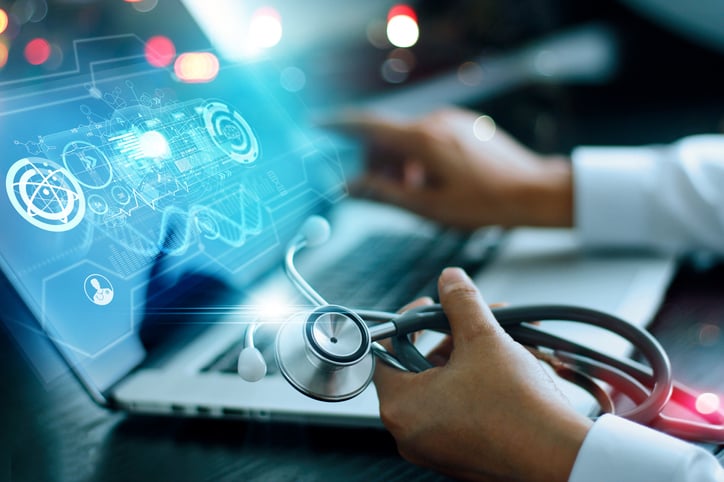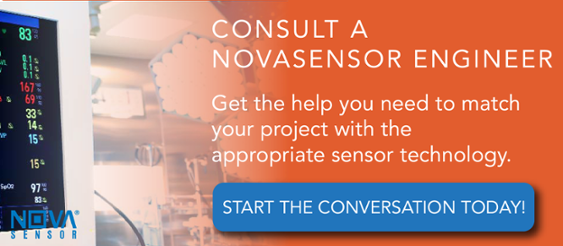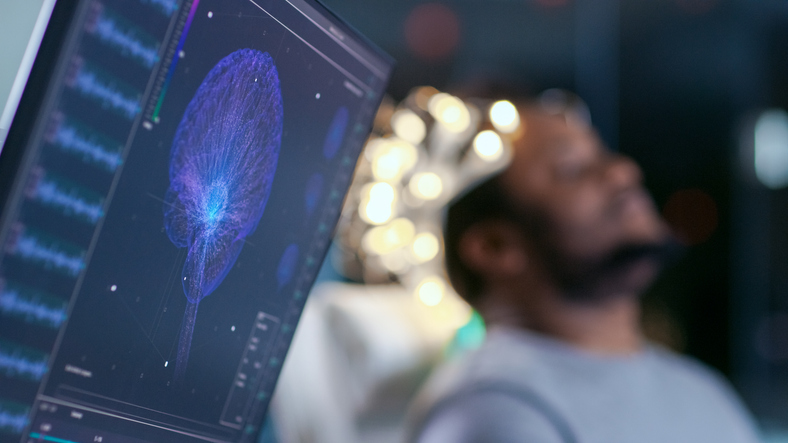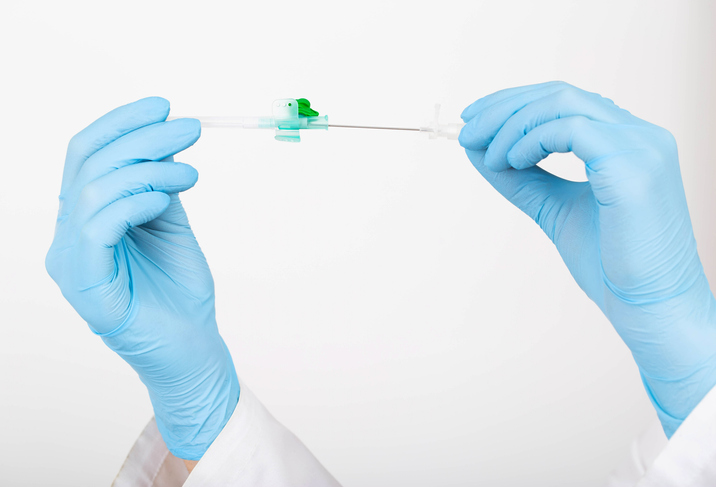Aligning Medical Instrumentation Application and Design & Sensors

In a perfect world, your latest OEM medical device would come together seamlessly.
The device’s design would be one of the easiest conceptualizations ever and need zero revisions. The months and years of R&D would fly by and there’d be no need for outside help.
Regulators testing the device would pass it with no notes. And as an added bonus, there’d be a long waitlist of committed customers eager for the first run to make its way off your production line.
The reality is ... that's simply not reality.
Creating an OEM medical device, be it a cranial catheter or a CPAP machine, takes years of meticulous research, hard work, and testing. It also involves working with suppliers and manufacturers from outside your company to acquire custom components that make the equipment work.
Just like the device they’re going in, custom integrated sensors – a must for OEM medical instrumentation application and design – don’t just happen. Getting them right requires working closely with an experienced OEM sensor manufacturer from concept to completion and beyond.
2 Key Starting Points for Medical Instrumentation Application and Design
When working with a sensor manufacturer to create sensors during the design and development of medical electronic instrumentation, there are two questions that need to be answered first:
- What is the application?
- Why is it important?
Though this pair of questions may seem basic, their answers have huge implications on your sensor manufacturer's work. These two questions set a foundation for designing medical instrumentation successfully with appropriate sensor technology.
Understanding the application helps manufacturers to develop a sensor that will correctly measure and monitor data within the desired precision range, accuracy level, or operational environment while providing results that are robust enough to meet performance requirements.
Understanding why an instrumentation project has been initiated provides insight into factors such as cost considerations and long-term usability needs (two things we'll discuss later). This can help inform decisions on elements such as specifying an optical filter for a detector system.
Ready to Tackle These Questions?
Our engineers can help! Book time to discuss your sensor needs today!
10 Other Considerations for Syncing Sensors With Medical Instrumentation Application & Design
This is where the rubber starts hitting the road more. Essentially, you’ll want to get into more finite details about your medical device and its application so your sensor maker can create a custom device that meets – and ideally exceeds – all of your specifications.
While medical devices are often complex and have a variety of specifications to consider, the main criteria for developing the right sensor technology for your device include:
- Dynamic range
- Output
- Accuracy
- Environment
- Medium measured
- Device specs
- Customer-required performance specs
- Intended lifespan
- Budget
- Regulations/certifications
1. Dynamic Range
How big or small does the range need to be for the sensor to accurately measure what it needs to? This is important, as sensors that don’t have enough range won’t pick up on all the necessary changes and vice versa.
Additionally, it’s important to consider what type of linearity and hysteresis the sensor offers. Does it measure accurately at both low and high ranges?
2. Output
How does your device need its sensors to communicate the data they collect? Depending on the application, you may need analog or digital outputs, or both. Does it require a specific interface (I2C, SPI), and should the sensor be programmed to send data on its own?
3. Accuracy
While precision is a non-negotiable, how precise does a sensor need to be?
This varies based on the application. High-accuracy sensors may be necessary for more advanced applications, whereas lower-precision sensors may suffice for basic monitoring.
4. Environment
Where is the sensor going to operate? Will it need to cope with extreme temperatures, humidity, or other environmental factors?
The conditions the sensor faces while in use can have an effect on its accuracy and reliability. If the environment is particularly harsh, the OEM must make sure that the selected sensor meets or exceeds the necessary industrial rating standards.
5. Medium Measured
Along the same lines as environment, what is the sensor going to measure? For instance, a temperature sensor that's immersed in fluid requires a different design than one that stays dry to ensure accuracy and an appropriate useful life. The same applies to other sensor types, such as pressure and flow.
6. Device Specs
As no two medical devices are the same, what sets yours apart? Or more specifically, what are the defining characteristics of your device that must be met by the selected sensor? These specs could include:
- What is the device the sensor is going in?
- How big is the device?
- How much room is there for the sensor?
- What does the installation area look like?
- How should the sensor connect to the system & what's the circuitry like?
- Are there sensor housing considerations?
To be sure, this is where things get very specific. As your device is one-of-a-kind, so too are its sensors. Any design considerations or performance requirements are truly unique as they're being accounted for to match your device.
7. Customer-Requested Performance Specs
Every customer is different, thus some may require your medical device and its sensors to perform at certain benchmarks.
- Minimum and maximum response times
- Operating temperature range(s)
- Calibration requirements (or lack thereof)
- Supply voltage
- Drift & stability compensation
To an extent this is no different than your device specs -- client requests are all going to be unique and specific to their needs. Expect this part of your conversation to be in-depth.
8. Intended Lifespan
How long does the sensor need to last?
Those meant to have a long useful life are designed and manufactured differently than those meant for single-use applications.
Some factors that may influence this decision include environmental conditions (such as temperature or humidity), whether the device requires frequent recalibration, and even cost considerations.
9. Budget
Speaking of cost ... a basic question but one that sets the stage for custom sensor development -- how much money do you have to work with?
Depending on the answer, your OEM sensor supplier will need to take a hard look at what materials, production techniques and technologies would be used to create a finished product.
More importantly though, if your budget doesn't match up with the actual production costs, it can stop moving forward on creating an inferior sensor. Consider it a safety net of sorts.
10. Regulations & Certifications
It's no secret that all medical devices require some sort of regulatory review and approval before being made available to the public.
It's a long process that requires absolute attention to detail. Any missteps can delay -- or outright stop -- the approval process. And remember: all it takes is one component of an OEM medical device to not meet a standard to put the entire piece of equipment out of compliance.
Among the most common regulations/certifications your device will likely be subject to include:
- CE Certification (European Union)
- ISO 13485 Certification (International Standardization)
- FDA 510(K)
Again, these are only a few of the considerations when working with an OEM sensor manufacturer to design medical devices using the appropriate sensing technology. Depending on your product and its application, there may be other regulations/certifications your devices and its components must meet. Just like you, your manufacturer should be up-to-date on what regulations its products need to meet.
Syncing Medical Instrumentation Application and Design
Just like designing your medical devices, working with an OEM sensor manufacturer to create the accompanying sensor technology is a complex process that requires careful consideration.
With a close partnership and attention to detail, both your team and your sensor manufacturer can create a product that meets (and even exceeds) the standards you have for your device and its sensors.
Ready to get started on matching sensors with your medical instrumentation design?
Get in touch! Our engineers are here to help.




